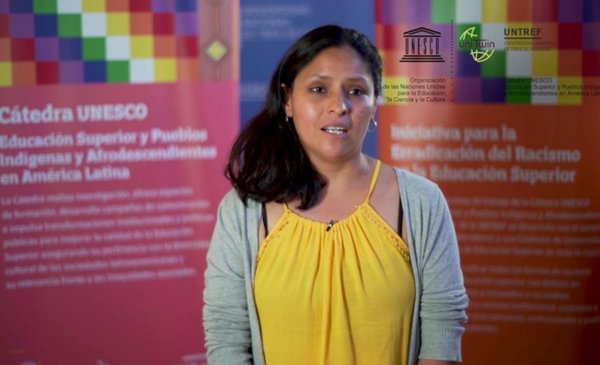Walking the earth and meeting the faces tanned by the sun, the industrious hands and the serious look that hides a shine of joy when seeing visitors arrive, perhaps expected for a long time. The indigenous communities of the country are visited by the Ministry of Women, Diversity and Gender of the Nation thanks to the territorial meetings carried out by the area of Approach to Violence against Members of Indigenous Peoples and thus they are made visible through proposals to denature the various types of violence that live within their territory.
The coordinator of the area, Aymara Choque, visited the province as she did throughout 2022 in the more than 200 communities that exist within the country belonging to 40 native peoples. The official held a dialogue with the members of the Huarpe community, mainly with the women, where each member raised her concerns and was able to express her ideas to work and feel accompanied by the ministry.
“In the framework of the territorial work that we do from the ministry, it seems essential to start working on public policies on how we distort and make visible the violence suffered by indigenous women. We visited the forty indigenous communities that exist throughout the entire country,” said the official in dialogue with purple ink.
On YouTube there is the short “Diálogos de saberes”, which adds the voices of women and leaders.
For the Aymara, as in every part of Argentina, in the indigenous communities it is also important to discuss what is happening within each one of them and to plant a flag on the various types of violence that exist and are often covered up due to the lack of access to different organisms.
“In each visit we observe and connect with everything that women go through, where we see that each process is different, because we know that in Argentina there are different native peoples who have their customs, their traditions and their ways of connecting. There are also languages that are still valid, so we must think about how we approach gender violence, taking into account the sense of ethnic and cultural belonging. There are forty native peoples, that means that there are 40 ways of seeing the world and it is necessary to respect each way according to what they propose”, explained Choque.
When talking about ethnic and cultural belonging, the lawyer recognized that “it has to do with the worldview that peoples have when it comes to being able to think and interact in our territory. We cannot think about public policies if we do not think about a sociolinguistic adaptation, for example, and presenting the resources in the different indigenous languages”.
Aymara assured that visiting each community puts at stake the knowledge that not only gender and patriarchal violence exists, but also others that come linked to spirituality, for example, where the customs and traditions of each original people are not respected. “This type of violence is not within a legal framework, there are typologies that are not made visible and there is also racism, which we must eradicate. In the towns, gender violence is suffered, either as a typology or modalities when it is generated with physical or verbal violence, but we also know that we are crossed by others such as indoctrination, speaking a single language without respecting the diversity that we have in language and many situations that it is important to denature and visualize”, he added.
Aymara announced that during 2023 with the boarding area they will continue with visits to the different territories and that the ministry is open to dialogue so that the different communities request assistance.
“We want to establish the link with each one of them, talk about violence and paradigms that arise from each one, and give a voice to those who are still, at this time, silenced. We understand that violence is colonial within the original peoples and beyond talking about the types of violence, making visible and identifying the signs, we want to have an intersectional and intercultural perspective ”, she concluded.
Writing/MGE
In territory: the realities of indigenous women | The Republic Journal

